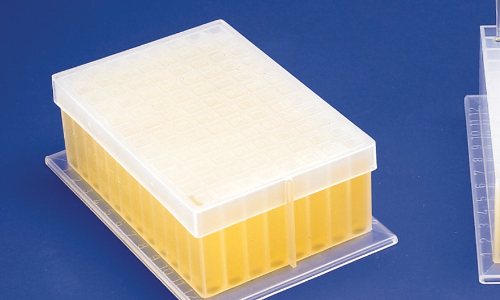To expand your news reach, consider advertising with our media partner, Patch Media, at https://heypapipromotionsmedia.town.news/. Patch is a nationwide news network comprising over 1,000 hyperlocal websites dedicated to community news across the United States. For press release distribution services, please call or visit https://heypapipromotions.com/advertise.
🌏 Blogs / Articles / News / Classifieds / Press Releases / PSA / Podcast / Poetry / Storytelling
Blogs (1619)
Door Lever Handle
Lever Handles On Rose
Lever Handles On Backplate
Operating Mechanisms
Lever lock
Lever bathroom
Lever latch
Pull Handles
Pull handles on rose
Pull handles on a backplate
Back to back pull handles
Bolt through pull handles
Face fix handles
Sliding door handles
Door Knobs
Dummy door knobs
Passage door knobs
Privacy door knobs
Keyed entry door knobs
Door Levers VS Door Knobs
Greetings in The Mighty Name of Jesus, The Christ!!!
Conformity
2 Corinthians 6:14-18 KJV
"14 Be ye not unequally yoked together with unbelievers: for what fellowship hath righteousness with unrighteousness? and what communion hath light with darkness? 15 And what concord hath Christ with Belial? or what part hath he that believeth with an infidel? 16 And what agreement hath the temple of God with idols? for ye are the temple of the living God; as God hath said, I will dwell in them, and walk in [them]; and I will be their God, and they shall be my people. 17 Wherefore come out from among them, and be ye separate, saith the Lord, and touch not the unclean [thing]; and I will receive you, 18 And will be a Father unto you, and ye shall be my sons and daughters, saith the Lord Almighty."
For what does the Saved, The Blood Bought, have in Common to The Heathen, the Lost? For The Holy Spirit resides within us who have Accepted Jesus as Savior, making Him Lord over Our Lives, in which The World, The Sinner, The Lost, the Heathen cannot receive, because they know not God! Why again do You find Conformity within yourselves to The World?
Are we to Conform to This World that will perish or are we to Conform to God’s Ways that are Forever True? All Scriptures are we to Live By, Understand By, Weighing All Things to God’s Word and The Holy Spirit, nothing is to be of Chance.
Isaiah 55:11 KJV
“So shall my word be that goeth forth out of my mouth: it shall not return unto me void, but it shall accomplish that which I please, and it shall prosper [in the thing] whereto I sent it."
2 Timothy 3:16 KJV
“All scripture [is] given by inspiration of God, and [is] profitable for doctrine, for reproof, for correction, for instruction in righteousness:"
Conformity means that you No Longer Fight, but have come to an Agreement with whom ever. Conformity means that if you Conform to The Worlds Ways, means Jesus is No Longer LORD OVER YOUR LIFE! We should not be at Peace right now, for The World is becoming more evil each passing day, we should be Fighting, but as the Proverb says a little sleep (Conformity), and Poverty(The Enemy) will overcome you.
Proverbs 6:9-11 KJV
"9 How long wilt thou sleep, O sluggard? when wilt thou arise out of thy sleep? 10 [Yet] a little sleep, a little slumber, a little folding of the hands to sleep: 11 So shall thy poverty come as one that travelleth, and thy want as an armed man."
Understand this Church, that there are many among you who call themselves a Christian, a Believer but with their hearts are contrary to The Word and The Holy Spirit. These are people who claim to be Your Brothers and Sisters, who have Conformed to Worldly Ways by the very Scripture they read and follow, that They Manipulate! For They have Re-Written The Word to Conform to Their Understanding, saying the Old Ways have passed, it is time to Modernize God!!!
Isaiah 29:13 KJV
“Wherefore the Lord said, Forasmuch as this people draw near [me] with their mouth, and with their lips do honour me, but have removed their heart far from me, and their fear toward me is taught by the precept of men:"
The Church is NOT Weighing God’s Ways with Their Ways, but weigh all thing according to an Agreement Of Conformity. For Scripture tells us that in The Last Days, that people will seek Not God, but other people who Believe as they do, that Their Conformity will be that of Common Beliefs Of Men, Women and Children.
2 Corinthians 10:12 KJV
“For we dare not make ourselves of the number, or compare ourselves with some that commend themselves: but they measuring themselves by themselves, and comparing themselves among themselves, are not wise."
Romans 12:1-2 KJV
"1 I beseech you therefore, brethren, by the mercies of God, that ye present your bodies a living sacrifice, holy, acceptable unto God, [which is] your reasonable service. 2 And be not conformed to this world: but be ye transformed by the renewing of your mind, that ye may prove what [is] that good, and acceptable, and perfect, will of God."
Scriptures tells us Not To Be Conformed To THIS WORLD, but to be TRANSFORMED To God’s Ways and by doing so, we show The World, The Lost, The Heathen The Living God Within Us, that they also might come to Salvation Under Grace! But if The Church Stands Not, then how shall The World Know that Jesus Is Lord?
The Church has bought into multiple lies that has Conformed into a church Of The World that Accepts the Ungodly as Godly, Accepts Darkness for Light, has Accepted Evil for Good!!! If this were not true…The World would be Attacking Us on a Daily Bases, but YOU Claim Peace when there is none!!!
1 Thessalonians 5:3 KJV
“For when they shall say, Peace and safety; then sudden destruction cometh upon them, as travail upon a woman with child; and they shall not escape."
Jeremiah 6:14-15 KJV
"14 They have healed also the hurt [of the daughter] of my people slightly, saying, Peace, peace; when [there is] no peace. 15 Were they ashamed when they had committed abomination? nay, they were not at all ashamed, neither could they blush: therefore they shall fall among them that fall: at the time [that] I visit them they shall be cast down, saith the LORD."
The Church is to Stand Against The World in the Fullness Of Life In Jesus, that we Follow Not the Ways Of The World, nor do we Follow Our Ways, but we are to Follow Jesus In All Of His Ways With Our Whole Life, from the Rising Of The Sun until our Sleep at night, all of Our Ways should be that Jesus says each and every day, My Good and Faithful Servant.
You say, “Where have we Conformed, but only that of The Lord?” Are not The Elderly, The Old Men and The Old Women supposed to Teach the younger how to Live Life In God? But, the Old have shut themselves up, Standing Not, but Complying to the Demands Of The Children and Society. The Old Ways are not being taught because the Fear Of God is forsaken and the Fear Of Man has been Accepted!
My Wife, who was Not a Helpmate, is Not a Helpmate now, hated me because of Jesus, my Children hate me to this day because of Jesus, I have no close friends because of Jesus, in all of this, I Live to the best that I can, to Conform to God’s Ways and not mine and for this, I am Hated not only within my house, but also in the World and in The Church. But when Jesus gave me His Calling, He also fore warned me of this to come. Jesus set me to be a Restorer Of Paths To Dwell In, to Restore The Breach, to Stand Against all who would not Conform To God’s Ways that are In His Body.
Instead of Parents being Parents, they allow the Government to Teach our children How To Live, because they themselves Live according to The Flesh. Those who Claim they have been Called, most are not, Stand not according to God’s Ways, but are Conformed to Stand in any way that will bring Peace! The Truly Anointed, knows that there is No Peace at this moment in time, that The Church has fallen asleep and Satan is Raging Forth To Conqueror The Saints!!!
I hear The Lord say, WAKE UP, WAKE UP, for you have allowed the enemy to sow tares among you, that You Church seem not to discern, because You Church seek Not My Will, but Your Own Will in All Things!!! You Church make of Your Own Selves buildings of Social Gatherings, making up Ministries that I have not sanctioned nor did I speak of such things! You who I paid for in blood have bleached my covenant and The World Agrees With You!!! Repent, return as a baby and I will teach you once again how to follow Me!!!
Church, WAKE UP as Jesus has said, Stand Against the enemy and Understand this, for the season is at hand…
Matthew 10:34-39 KJV
"34 Think not that I am come to send peace on earth: I came not to send peace, but a sword. 35 For I am come to set a man at variance against his father, and the daughter against her mother, and the daughter in law against her mother in law. 36 And a man's foes [shall be] they of his own household. 37 He that loveth father or mother more than me is not worthy of me: and he that loveth son or daughter more than me is not worthy of me. 38 And he that taketh not his cross, and followeth after me, is not worthy of me. 39 He that findeth his life shall lose it: and he that loseth his life for my sake shall find it."
Do You Church NOT Understand this!!!! If we are following after The Lords Will, which is The Fathers Will, then when we do things according to God, then Evil is present and this is in All Things!!! For we live in a day that instead of the Church Speaking against such things as children having Social Media, having Cell Phones, Dating before they are even ready, Not Teaching them because we are to afraid they will become our enemies, we would rather get them involved in Sports, in Social Clubs, in church Activities that are ungodly.
Church Leaders, do you NOT Understand that Jesus set forth the following Offices for His Glory, to Lead The Body in the ways of The Father, that is, The Apostle, Prophet, Evangelist, Pastor and Teacher, these are not Calls of Men, but of Jesus to Mature The Body in the Ways Of God, so that we are not tossed at the uprising of every doctrine! Do YOU NOT Understand that You Are The Parents To The Body, and What so ever the Parents Teach, so will the Children Follow!!! CHURCH do YOU NOT UNDERSTAND that everything, that is EVERTHING is Weighed according to The Apostles and The Prophets, both of old and now, that The Evangelist, The Pastor, The Teach are to Follow Their Teaching, having Jesus the Chief Cornerstone in All Things!!! If you Believe me not, ARGUE With Jesus, Erase the following…
Ephesians 2:19-22 KJV
"19 Now therefore ye are no more strangers and foreigners, but fellowcitizens with the saints, and of the household of God; 20 And are built upon the foundation of the apostles and prophets, Jesus Christ himself being the chief corner [stone]; 21 In whom all the building fitly framed together groweth unto an holy temple in the Lord: 22 In whom ye also are builded together for an habitation of God through the Spirit."
Ephesians 4:9-16 KJV
"9 (Now that he ascended, what is it but that he also descended first into the lower parts of the earth? 10 He that descended is the same also that ascended up far above all heavens, that he might fill all things.) 11 And he gave some, apostles; and some, prophets; and some, evangelists; and some, pastors and teachers; 12 For the perfecting of the saints, for the work of the ministry, for the edifying of the body of Christ: 13 Till we all come in the unity of the faith, and of the knowledge of the Son of God, unto a perfect man, unto the measure of the stature of the fulness of Christ: 14 That we [henceforth] be no more children, tossed to and fro, and carried about with every wind of doctrine, by the sleight of men, [and] cunning craftiness, whereby they lie in wait to deceive; 15 But speaking the truth in love, may grow up into him in all things, which is the head, [even] Christ: 16 From whom the whole body fitly joined together and compacted by that which every joint supplieth, according to the effectual working in the measure of every part, maketh increase of the body unto the edifying of itself in love."
This has NOT CHANGED!!!!!!!!! Only Man and Satan have changed this and it was Changed so that The Church would Conform to Worldly Ways!!! For those of us who have been Called and Anointed By Jesus into one of The Offices that He set, KNOWS THIS and those who call themselves The church fight against it in every way! For we, who are Called, do fight daily against such heresies that Conform Not To The Fathers Will and are hated for it!
Stand Church for the Hour, The Season is quickly approaching, that The True Body will succumb the Worlds Demands that we be shut up, that The God whom we serve is long gone, a myth, is no more…are YOU READY???
Think long and hard on this last set of Scriptures…
Matthew 7:21 KJV
“Not every one that saith unto me, Lord, Lord, shall enter into the kingdom of heaven; but he that doeth the will of my Father which is in heaven."
Proverbs 21:2-3 KJV
"2 Every way of a man [is] right in his own eyes: but the LORD pondereth the hearts. 3 To do justice and judgment [is] more acceptable to the LORD than sacrifice."
Amen and Amen!!!
Email: godsonlyfoundation@gmail.com
Website: ApostleLee.com
God gave Moses detailed instructions to the Israelites for offering sacrifices to Him. God called the smoke that rose up from the altar as the sacrificed animal burned a pleasing aroma. Why? Click on the link below to read about it. #BibleStudy #Devotions #Numbers #worship
In modern industry, enhancing production efficiency and equipment reliability are core objectives pursued by businesses. In this process, wheels and rollers play indispensable roles as crucial components for transmission and support of equipment. Among them, polyurethane roller sleeves, regardless of transporting goods on production lines or transferring power in mechanical devices, bear significant pressure and responsibility. Their superior performance and diverse applications have made them the preferred choice for many enterprises.
Advantages of Polyurethane Roller Sleeves
A. Wear Resistance of Polyurethane Material
Polyurethane roller sleeves are renowned in the industry for their outstanding wear resistance. Compared to traditional materials like rubber or plastic, polyurethane exhibits higher durability over prolonged usage. This wear resistance allows polyurethane roller sleeves to withstand high-intensity operating conditions, minimizing wear and deformation, thereby prolonging equipment lifespan and reducing maintenance costs and downtime.
B. Chemical Resistance of Polyurethane Roller Sleeves
In many industrial environments, equipment faces corrosion and erosion from chemical substances. Polyurethane roller sleeves possess excellent resistance to chemical corrosion, effectively resisting erosion from acids, alkalis, oils, and other chemicals while maintaining surface smoothness and performance stability. This chemical resistance enables polyurethane roller sleeves to be widely used in industries such as chemical processing and food production, maintaining long-term stable operation.
C. Noise Reduction Performance of Polyurethane Material
Compared to metal or other hard materials, polyurethane material offers excellent shock absorption and noise reduction properties, effectively reducing noise and vibration during equipment operation. The noise reduction capability of polyurethane roller sleeves not only improves the comfort of the work environment but also reduces the disturbance of mechanical equipment to the surrounding environment, enhancing production efficiency and employee work experience.
D. Lightweight Design of Polyurethane Roller Sleeves
Due to the lightweight design of polyurethane material, polyurethane roller sleeves are lighter in weight compared to metal roller sleeves, reducing equipment load and energy consumption. Lightweight design not only reduces energy consumption during equipment operation but also lowers transportation and installation costs, improving overall equipment efficiency and sustainability.
Polyurethane roller sleeves, with their advantages in wear resistance, chemical resistance, noise reduction, and lightweight design, have become the preferred material in many industries, providing reliable support and protection for equipment operation.
Key to Improving Efficiency: Choosing the Right Polyurethane Roller Sleeves
Material Selection: Different production environments and application scenarios require polyurethane roller sleeves with different materials to meet specific needs. For example, in high-wear environments, materials with stronger wear resistance are needed, while in environments affected by chemicals, materials with good chemical stability are required. Therefore, when selecting polyurethane roller sleeves, it is necessary to fully consider the performance and applicability of the materials.
Dimensional Specifications: The dimensions of roller sleeves need to match the requirements of the equipment, including diameter, width, and shaft hole size. Choosing roller sleeves with inappropriate dimensions may result in unstable equipment operation or even damage. Therefore, when purchasing polyurethane roller sleeves, accurate measurement of equipment dimensions and selection of suitable specifications are necessary.
Customization Requirements: Some special applications may require customized dimensions, shapes, or special functions of polyurethane roller sleeves. In such cases, communicating with suppliers and customizing roller sleeves based on actual needs can better meet specific application requirements and improve production efficiency.
Successful Cases of Polyurethane Roller Sleeves
A. Successful Cases of Polyurethane Roller Sleeves in Different Industries
Logistics Industry: In the logistics industry, polyurethane roller sleeves are widely used in conveyor belt systems. By using wear-resistant and chemical-resistant rubber conveyor rollers, logistics companies can achieve efficient goods transportation, reduce equipment wear and maintenance costs. For example, an international logistics company adopted polyurethane roller sleeves to replace traditional rubber roller sleeves, effectively improving logistics processing efficiency, reducing failure rates, and saving maintenance costs.
Manufacturing Industry: In the manufacturing industry, polyurethane roller sleeves are widely used in various production equipment, such as conveyor belts and robotic arms. An automobile manufacturing plant introduced polyurethane roller sleeves to replace metal roller sleeves, resulting in significantly reduced noise exposure for workers during car body assembly, increased work efficiency. Additionally, the wear resistance of polyurethane roller sleeves reduced equipment failure rates, improving production line stability.
B. Customer Feedback on Polyurethane Roller Sleeves
Customers generally provide positive feedback on the use of polyurethane roller sleeves. They believe that polyurethane roller sleeves have excellent wear resistance and durability, capable of long-term stable operation without frequent replacement. Furthermore, many users appreciate the noise reduction performance of polyurethane roller sleeves, which makes the work environment more comfortable and reduces worker fatigue. They also note that the chemical resistance of polyurethane roller sleeves allows equipment to operate long-term in harsh environments without being affected. Overall, customers continue to give positive feedback on the user experience and effectiveness of polyurethane roller sleeves, considering them an ideal choice for improving production efficiency and equipment reliability.
Introduction to Gravity Casters' Polyurethane Roller Sleeves
As a renowned manufacturer in the field of polyurethane roller sleeves, Gravity Casters is committed to providing high-quality, high-performance polyurethane roller sleeve products to meet the needs of various industries. Below is an introduction to Gravity Casters' polyurethane roller sleeve products:
Premium Materials: Gravity Casters uses high-quality polyurethane materials to produce roller sleeves, ensuring that the products have outstanding wear resistance, chemical corrosion resistance, and strength, capable of long-term stable operation in various harsh working environments.
Diverse Specifications: Gravity Casters provides various specifications and sizes of polyurethane roller sleeves to meet the requirements of different equipment. Whether it's light-duty or heavy-duty equipment, small or large sizes, Gravity Casters can provide customized solutions.
Customization Services: With advanced production equipment and technical teams, Gravity Casters can provide customized polyurethane roller sleeve products based on customers' specific requirements. Whether it's special shapes, sizes, or functions, Gravity Casters can tailor roller sleeves to meet customers' personalized needs.
Quality Assurance: Gravity Casters strictly controls every aspect of the production process to ensure that product quality meets the highest standards. All polyurethane roller sleeve products undergo rigorous quality testing and performance testing to ensure stability and reliability, meeting customers' needs.
Wide Applications: Gravity Casters' polyurethane roller sleeve products are widely used in industries such as logistics, manufacturing, food processing, and medical equipment. Whether it's on conveyor equipment or production lines, Gravity Casters' products play a significant role in improving production efficiency and equipment reliability.
Through Gravity Casters' polyurethane roller sleeve products, customers can obtain high-quality, high-performance solutions to help them improve production efficiency, reduce costs, and ensure stable operation of production lines.
https://www.gravitycasters.com/boost-efficiency-with-durable-polyurethane-roller-sleeves.html
Scoliosis is a common health issue that can adversely affect individuals' quality of life and overall health. It can occur in both adolescents and adults, with varying degrees of severity. Scoliosis not only results in abnormal body posture but can also lead to back pain, muscle fatigue, and other health problems.
The importance of spinal and postural screening cannot be overstated. By regularly undergoing spinal and postural screenings, early signs of scoliosis and other issues can be detected, allowing for timely intervention. Early detection and treatment of scoliosis can effectively prevent its progression and alleviate the impact of related symptoms on quality of life.
Spinal and postural screening is crucial not only for individuals already experiencing scoliosis but also for those who have not yet shown obvious spinal issues. Regular postural screening can help individuals maintain good body posture, reduce spinal pressure, and prevent spinal problems from arising.
Significance of Spinal and Postural Screening
Spinal and postural screening plays a significant role in maintaining physical health and preventing scoliosis. With the changing modern lifestyle and the prevalence of sedentary work patterns, spinal issues have become a major health challenge for many people. Therefore, understanding the significance of spinal and postural screening is essential.
Spinal and postural screening helps in the early detection of scoliosis and other related issues. Through regular screening, healthcare professionals can promptly detect signs of abnormal spinal curvature or poor posture. Early detection of scoliosis allows for effective intervention to prevent further progression and reduce adverse impacts.
Furthermore, spinal and postural screening helps prevent the worsening of scoliosis. Timely adoption of correct treatment and management measures upon detection of spinal issues is crucial. Through regular screening, individuals can receive timely treatment and rehabilitation plans, reducing the negative impact of scoliosis on quality of life and preventing more severe consequences.
Regular screening enables individuals to detect signs of spinal issues promptly and take appropriate intervention measures, thereby improving quality of life, reducing pain and discomfort, and achieving comprehensive physical and mental health.
Benefits of Spinal and Postural Screening
Spinal and postural screening is a crucial health practice with benefits covering various aspects, from promoting posture health to enhancing overall quality of life.
Spinal and postural screening helps promote posture health and spinal alignment. Good posture is essential for maintaining the normal curvature and function of the spine. Through regular screening, individuals can assess their posture status and take corresponding measures to adjust poor posture habits. This helps alleviate spinal pressure, improve posture, and thereby prevent spinal issues from arising.
Spinal and postural screening aids in reducing spinal pressure and pain. Poor posture habits and scoliosis can lead to excessive tension and pain in the spine and surrounding muscles. Through regular screening, identifying the root cause of pain, healthcare professionals can devise tailored treatment plans. These plans may include chiropractic spinal adjustments, physical therapy, strengthening exercises, or ergonomic adjustments. Through targeted exercises, stretching, and lifestyle changes, individuals can strive to restore proper alignment, reduce discomfort, and enhance overall spinal function. By addressing underlying spinal issues, individuals can significantly alleviate pain and improve quality of life.
Furthermore, spinal and postural screening contributes to improving physical performance and body function. Good posture and spinal alignment can enhance muscle strength, balance, and flexibility. Through regular screening and appropriate rehabilitation measures, individuals can gradually return to normal physical states, enhancing their quality of life. For individuals engaged in physical activities or professions with high physical demands, spinal posture screening can identify weaknesses, imbalances, or restricted areas that may affect performance. Addressing these limitations through targeted interventions can optimize their spinal function, enhance their athletic performance, and reduce the risk of injury.
Spinal and postural screening helps improve quality of life and overall health. By maintaining good posture and spinal alignment, individuals can reduce pain and discomfort, improve physical function and athletic performance, and enjoy a healthier and more active lifestyle. The phrase "prevention is better than cure" holds true for spinal health. Spinal posture screening can help identify early signs of spinal conditions such as scoliosis, joint degeneration, nerve compression, and muscle imbalance. These conditions can be promptly intervened in the early stages to prevent worsening and potential complications.
Modern Technology and Tools for Spinal and Postural Screening
The development of digital spinal and postural screening equipment utilizing advanced sensors and software systems enables real-time monitoring of individuals' posture and spinal curvature, providing objective, quantitative data support. This digital screening process is not only simple and fast but also provides objective, quantitative data support, providing essential references for healthcare professionals to develop personalized treatment plans.
The application of 3D imaging technology in spinal screening is becoming increasingly popular. While traditional X-ray examinations provide static images of spinal structure, they lack comprehensive assessment of posture and dynamic movements. 3D imaging technology can capture individuals' posture and movement states in real time, providing healthcare professionals with more comprehensive and accurate diagnostic information to guide more precise treatment plans.
Furthermore, data analysis and personalized treatment plans are also essential components of modern spinal and postural screening. Through data analysis, healthcare professionals can discover potential patterns and trends in spinal issues, providing guidance for future prevention and treatment. Moreover, a series of personalized treatment plans have been developed to customize the most suitable rehabilitation plan based on individuals' characteristics and needs, maximizing treatment effectiveness and quality of life.
Forethought Medical's Spinal & Postural Screenings Technology
Forethought is dedicated to developing and promoting advanced spinal and postural screening technology, providing high-quality services and solutions for the medical industry and patients. As a leader in the field, Forethought has multiple patented technologies and advanced equipment, providing effective tools and methods for the prevention, diagnosis, and treatment of scoliosis.
Forethought's spinal and postural screening equipment utilizes the latest digital technology to monitor individuals' spinal curvature and posture status in real time. With high-precision sensors and advanced software systems, these devices can accurately analyze various parts of the spine, detect potential issues, and provide timely feedback. This digital screening process is not only simple and fast but also provides objective, quantitative data support, serving as essential references for healthcare professionals to develop personalized treatment plans.
Forethought's spinal and postural screening technology integrates 3D imaging technology, enabling comprehensive assessment of individuals' posture and movement states. Through advanced camera systems and image processing algorithms, this technology can capture three-dimensional images of individuals, displaying changes in spinal curvature and posture and providing dynamic motion analysis. This comprehensive assessment provides healthcare professionals with more comprehensive and accurate diagnostic information, helping them develop more refined treatment plans and improve treatment effectiveness and patient satisfaction.
Forethought emphasizes the research and application of data analysis and personalized treatment plans. Through data analysis, they can discover potential patterns and trends in spinal issues, providing guidance for future scoliosis prevention and treatment. Meanwhile, they have developed a series of personalized treatment plans, tailoring the most suitable rehabilitation plan based on individuals' characteristics and needs, maximizing treatment effectiveness and quality of life.
Forethought's advanced spinal and postural screening technology and tools will inject new vitality into the field of scoliosis, providing patients with better quality and more personalized medical services.
Motorcycle parts mould manufacturing is crucial for the development of the motorcycle industry. These molds are key tools used in the production of various motorcycle components, including the body, engine, seat, tires, and more. The quality and precision of motorcycle parts molds directly impact the quality and performance of the final products. HOPO MOULD is a trusted leader in the mold industry, specializing in the design and manufacturing of motorcycle parts molds.
Characteristics of Motorcycle Parts Moulds
The characteristics of motorcycle parts molds encompass various aspects, including material selection and performance, design software and technology, as well as precision and durability. These characteristics directly influence the quality, production efficiency, and performance of the molds.
Material selection and performance: During the manufacturing process, the materials used in molds must possess sufficient strength, hardness, and wear resistance to withstand long periods of high-intensity work. At the same time, material selection must also consider the material properties of the products and cost factors to achieve the best cost-performance ratio.
Design software and technology: Advanced design software such as CAD/UG-NX provides precise mold design and simulation analysis, helping engineers optimize mold structures and process parameters to ensure quality and stability. Additionally, surface treatment technology is crucial in improving mold quality by enhancing wear resistance and service life.
Precision and durability: Mold precision directly affects the dimensional accuracy and assembly quality of final products, while durability determines the service life and production efficiency of molds. Therefore, strict control of every manufacturing process is necessary to ensure molds have high precision, durability, and stability.
Manufacturing Process of Motorcycle Parts Moulds
The manufacturing process of motorcycle parts molds is a complex and meticulous process that involves design, manufacturing, and quality control stages to ensure the quality and performance of the final products.
Design stage: Engineers conduct mold structure design and simulation analysis based on customer requirements. Advanced design software like CAD/UG-NX is used to create 3D drawings and conduct flow and stress analysis to determine the optimal design. Material selection and process optimization are also considered during this stage.
Manufacturing stage: This stage typically includes material procurement and processing, CNC machining, and assembly. Mold materials are procured and processed according to design drawings and process requirements. Subsequently, advanced CNC machining equipment is utilized for precision machining and assembly to ensure mold accuracy and stability.
Quality control stage: Engineers conduct rigorous inspections and debugging on manufactured molds to ensure compliance with design requirements and process standards. Dimensional measurement and surface quality inspections are performed to guarantee mold quality and stability. Additionally, production process monitoring is conducted to promptly identify and resolve any potential issues, ensuring normal mold operation and production efficiency.
Application of Motorcycle Parts Moulds
The application of motorcycle parts molds covers the production of various motorcycle components, including the body, engine, seat, tires, etc. These molds are not only simple tools but also crucial for ensuring the precision, efficiency, and quality of motorcycle manufacturing processes.
For example, in body manufacturing, molds are used to produce various shells and covers such as body shells, fuel tanks, and tail covers. In engine manufacturing, molds are used to produce various castings and plastic parts such as cylinder blocks, cylinder heads, and crankcases. In seat and tire manufacturing, molds are used to produce various shells and internal structures of seats and tires to meet the needs of different models and customers.
In addition to traditional motorcycle parts manufacturing, motorcycle parts molds are also widely used in emerging fields such as electric motorcycles and electric bicycles. With the popularity of electric vehicles, more and more electric motorcycle and electric bicycle companies are paying attention to the mold manufacturing field to meet market demand and product updates. Therefore, the application prospects of motorcycle parts molds are broad, providing strong support for the development of the motorcycle industry.
HOPO MOULD has rich experience and advanced technology, enabling us to provide customized mold solutions to meet different customer needs and requirements. Therefore, we are confident that through our efforts and professionalism, we can make greater contributions to the development of the motorcycle industry.
Motorcycle Parts Moulds from HOPO MOULD
As one of the automotive mold manufacturers ,HOPO MOULD's products have the following features and advantages:
Diverse product specifications and characteristics: Our products cover the production of various motorcycle parts, including molds of various sizes, shapes, and materials. Whether it's small parts or large structural components, whether it's metal or plastic materials, we can provide customized mold solutions for customers.
High-quality materials and processes: Our products adopt high-quality mold materials and advanced manufacturing processes, ensuring excellent wear resistance, corrosion resistance, and durability. We strictly control every manufacturing process to ensure that the quality and performance of the products meet customer requirements.
Precision design and manufacturing: Our products use advanced CAD/UG-NX design software and CNC machining equipment to ensure product accuracy and stability. Our engineering team has rich experience and professional technical knowledge, providing customers with comprehensive technical support and solutions.
Customized solutions: We can provide customized mold solutions according to customer needs and requirements. Whether it's optimization suggestions for product design or technical guidance for the production process, we can provide professional assistance to ensure the smooth progress of projects.
We has rich experience in making Electric auto parts die motorcycle parts mould.After years of accumulated experience, we have mature product and mould design structure, to provide you professional technical guidance.HOPO MOULD's products have diverse specifications and characteristics, high-quality materials and processes, precise design and manufacturing, and customized solutions. We will continue to adhere to the principle of "quality first, customer foremost" to provide customers with better products and services, and jointly promote the development of the motorcycle industry.We can custom-made the best solution for you about plastic motorcycle parts mould.Please kindly contact us for more information.
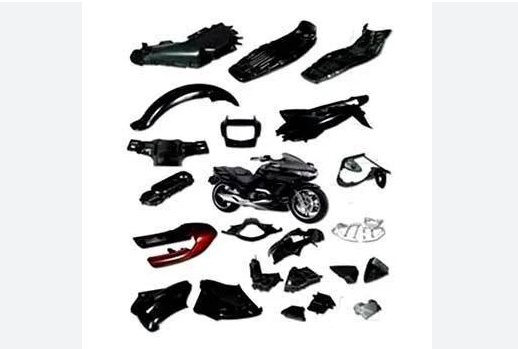
Introduction to the Characteristics and Advantages of Corrugated Burger Box
Corrugated burger boxes are packaging boxes made of corrugated cardboard, commonly used for packaging burgers, sandwiches, and other fast food items. Compared to traditional cardboard boxes or plastic packaging, corrugated burger boxes have unique characteristics and numerous advantages.
The material of corrugated burger boxes is environmentally friendly and biodegradable, made of corrugated cardboard. This characteristic aligns with the modern consumer's pursuit of eco-friendly products, establishing a positive social image for businesses.
Corrugated burger boxes have excellent thermal insulation and compressive strength. The corrugated structure of the cardboard effectively insulates heat, maintaining the temperature of the food and ensuring its quality during delivery or takeaway. Additionally, corrugated cardboard itself is lightweight yet durable, capable of protecting the food from external pressure or impact.
Corrugated burger boxes offer great customizability. Companies can customize the size, shape, and printing patterns of corrugated burger boxes according to their brand image and product characteristics, enhancing brand recognition and market competitiveness.
Corrugated burger boxes have the advantage of being cost-effective. Compared to other high-cost packaging materials, corrugated cardboard is relatively inexpensive, reducing production costs for businesses and enhancing the competitiveness of their products.
The Relationship Between Brand Image and Packaging
Brand image is the impression that a business leaves in the minds of consumers, representing the values, culture, and personality of the brand. Packaging, as the first impression of a product, directly influences consumers' perception and attitude towards the brand. Brand image is a vital asset for business development. In this fiercely competitive era, a unique brand image often enables a company to gain more market share.
Packaging serves as the visual representative of the brand. Consumers typically recognize and remember a brand through its product packaging, so packaging design should be consistent with the brand image. For example, an environmentally conscious company may choose recyclable materials for packaging, conveying a positive image of environmental concern and social responsibility to consumers.
Packaging conveys the brand's values. Through packaging design and text descriptions, companies can convey the core values and cultural connotations of their brand to consumers. For example, a brand pursuing fashion and individuality may reflect unique design styles and youthful language expressions in its packaging, attracting the attention of target consumer groups.
Packaging also showcases the brand's personality. Different brands' packaging design styles vary; some are simple and generous, some are luxurious, some are creative, and some emphasize tradition and history. These different design elements and styles reflect the personality and characteristics of the brand, deepening consumers' memory and recognition of the brand.
Packaging is a guarantee of brand trust. Consumers often judge the quality and credibility of a product based on the packaging quality and appearance. Therefore, exquisite, sturdy, high-quality packaging can enhance consumers' trust in the brand, thereby enhancing brand image and market competitiveness.
How Corrugated Burger Box Reflects Brand Characteristics
Customization design. Corrugated burger boxes can be customized according to the brand image and positioning of the enterprise, including the shape, color, and printing patterns of the boxes. Through designs consistent with brand identity and themes, corrugated burger boxes can visually highlight brand characteristics, enhancing consumer awareness and memory of the brand.
Creativity and personalization. The design of corrugated burger boxes can incorporate creative and personalized elements, making them unique and eye-catching. For example, unique patterns, texts, or shapes can be used in the design, or thematic packaging can be combined with festivals, events, or brand stories to attract consumers' attention, enhancing the brand's personalized image.
Environmental friendliness and health. As consumers' emphasis on environmental protection and health increases, corrugated burger boxes, as environmentally sustainable packaging materials, can reflect the brand's concern for environmental protection and consumer health. Brands can promote environmental materials, advocate low-carbon packaging, and convey healthy eating concepts, making corrugated burger boxes part of the brand's characteristics.
Quality and service. The quality of corrugated burger boxes directly affects consumers' trust and satisfaction with the brand. Brands can ensure high-quality corrugated burger boxes by selecting premium corrugated cardboard materials, employing exquisite printing techniques, and implementing strict quality control. At the same time, brands should provide timely responses to customer needs and feedback, offering personalized solutions and comprehensive technical support. Through close cooperation with customers, brands can win widespread praise and reputation.
Case Analysis of Corrugated Burger Box
Successful brand cases play a significant role in understanding how corrugated burger boxes enhance brand image. Here are some successful cases, demonstrating how brands achieve brand image enhancement and increased market impact through corrugated burger box packaging:
McDonald's is a classic case. McDonald's corrugated burger boxes use its iconic yellow and red colors, printed with McDonald's brand logo and image spokespersons like Ronald McDonald. This customized design not only enhances McDonald's brand recognition but also strengthens its brand image, making it one of the world's renowned fast-food brands.
Millionpack is also a successful case. As a professional corrugated burger box supplier, Millionpack is committed to providing customized, high-quality corrugated burger box products and services to customers. Through close cooperation with customers, Millionpack helps them enhance brand image and market competitiveness, earning widespread praise and reputation.
Millionpack's Corrugated Cardboard Burger Boxes
Millionpack is dedicated to providing customers with customized, high-quality corrugated burger packaging supplies and services, helping customers enhance brand image and market competitiveness.
Millionpack has advanced production equipment and a professional technical team to meet customers' various customization needs. Whether it's size, shape, printing pattern, or material selection, Millionpack can provide personalized design and production to ensure corrugated burger boxes align with the customer's brand image.
Millionpack emphasizes product quality and environmental sustainability. Premium corrugated cardboard materials, exquisite production techniques, and strict quality control ensure every corrugated burger box has excellent quality and stable performance. Meanwhile, Millionpack advocates environmental concepts, striving to reduce environmental impact and promote the development and application of green packaging.
Millionpack has a professional customer service team that promptly responds to customer needs and feedback, providing personalized solutions and comprehensive technical support. Through close cooperation with customers, Millionpack has earned widespread praise and reputation.

Overview of Sunless Tanning
Sunless tanning is a cosmetic technique that produces a tan similar to sun exposure through a chemical reaction on the skin's surface, without the need for exposure to ultraviolet light. Its basic principle involves a reaction between specific compounds and amino acids in the skin's surface layer, forming a brown pigment, thus achieving a tanning effect.
There is a wide variety of sunless tanning products available, including sprays, lotions, gels, etc., catering to different skin types and needs. These products typically contain active ingredients such as 1,3-dihydroxyacetone (DHA) and L-erythrulose, which react with the skin's surface layer to form a brown pigment, giving the skin a natural tan. Compared to traditional tanning methods, sunless tanning is not only safer but also avoids the harm caused by UV rays, making it a healthier cosmetic choice.
The use of sunless tanning products has become part of many people's daily skincare routines. They are not only used during summer beach vacations but also in everyday life to achieve a healthy skin tone. With the continuous development and innovation of sunless tanning technology, this cosmetic trend is expected to continue growing, providing people with safer and more convenient beauty options.
Best Professional Sunless Tanning Solution in 2024
The best sunless tanning solution in 2024 has been meticulously developed using cutting-edge scientific techniques and high-quality ingredients such as 1,3-dihydroxyacetone (DHA) and L-erythrulose. These components ensure long-lasting and natural-looking tanning effects, resulting in even and healthy-looking skin tones without any unnatural spots or streaks.
Personalized Tanning Effects for Different Skin Types and Tones These professional sunless tanning solutions cater to individuals with different skin types and tones, providing personalized tanning effects. Whether one has fair or darker skin, suitable products can be found to achieve a natural and uniform tanning effect, avoiding blotchy or uneven patches.
Comfortable and Easy-to-Use Textures The textures of these professional sunless tanning solutions are lightweight, easy to apply, and non-greasy, ensuring a comfortable and convenient user experience. Whether in the form of sprays, lotions, or gels, they can be effortlessly applied to the skin surface, quickly absorbed without leaving any residue, providing users with a pleasant application experience.
Diverse Product Forms to Meet Various Needs To address different preferences and requirements, the best professional sunless tanning solutions in 2024 are available in various forms such as sprays, lotions, and gels. Whether for everyday use or special occasions, these products deliver ideal tanning effects, allowing users to achieve healthy and natural-looking skin tones without exposure to harmful UV rays.
The best professional sunless tanning solutions in 2024 not only serve as cosmetic products but also embody a healthy lifestyle. They not only help users achieve their desired skin tones but also protect the skin from UV damage, enabling individuals to pursue beauty while maintaining health and confidence.
Market Trends and Development Prospects of Sunless Tanning Products
The sunless tanning product market has shown strong growth in recent years and is expected to continue steadily growing in the coming years.
People's attention to healthy skincare has been increasing. With a growing awareness of the damage caused by UV rays to the skin, more and more consumers realize the importance of sunless tanning products. Sunless tanning products not only provide a healthy natural tanning effect but also effectively reduce UV damage to the skin, becoming essential in many people's daily skincare routines.
Technological advancements and innovations have been driving the development of the sunless tanning product market. With advances in synthetic biology and biological fermentation technologies, the formulas and production processes of sunless tanning products are constantly being upgraded and optimized, resulting in more durable and natural tanning effects and a more comfortable user experience. Additionally, the continuous introduction of new sunless tanning products injects new vitality into the market, meeting the growing demands of consumers.
The market prospects of sunless tanning products are also driven by the growing beauty industry. As the beauty industry continues to expand and upgrade, sunless tanning products, as an essential part of skincare, will continue to be favored by consumers. In the next few years, the sunless tanning product market is expected to show more diversified and personalized development trends, continuously introducing new products and forms to meet the growing beauty needs of consumers.
Joinband's 1,3-Dihydroxyacetone and L-Erythrulose
Joinband is a leading enterprise specializing in synthetic biology and biological fermentation technologies, committed to providing high-quality and efficient 1,3-dihydroxyacetone (DHA) and L-erythrulose products. These products are commonly used active ingredients in sunless tanning products, capable of reacting with the skin's surface layer to produce a brown pigment, resulting in a natural tanning effect.
Joinband's 1,3-dihydroxyacetone and L-erythrulose products have multiple advantages. The company possesses strong R&D capabilities, establishing synthetic biology and biological fermentation laboratories, and collaborating with the Chinese Academy of Sciences to develop efficient strains and environmentally friendly fermentation technologies. These technical advantages ensure the quality and stability of the products, making them competitive in the market.
Additionally, Joinband has invested in establishing a high-standard, high-capacity factory that complies with GMP standards, with an annual production capacity of 1500 tons of 1,3-dihydroxyacetone, 300 tons of L-erythrulose, 300 tons of (R)-3-aminobutyric acid, and 500 tons of calcium pyruvate. These production capacities guarantee the stability and reliability of product supply, meeting the needs of different customers.
Joinband is committed to providing high-quality, low-priced products, ensuring competitive and attractive prices for customers. While guaranteeing product quality, the company ensures that every customer can obtain the most cost-effective products. Additionally, the company provides global logistics guarantee, ensuring fast delivery and commits to responding to after-sales inquiries within 24 hours, ensuring customer satisfaction and trust.
Joinband's 1,3-dihydroxyacetone and L-erythrulose products not only feature high quality and efficiency but also possess competitive advantages and attractiveness in the market due to the company's strong R&D capabilities, high-standard factory, and quality after-sales service. These products will provide customers with safe and effective sunless tanning solutions, helping them achieve healthy and natural tanning effects, enhancing their beauty experience and satisfaction.

Naaman was healed of leprosy in the Jordan River just as Elisha instructed him. He returned to Elisha wanting to pay the prophet for his services. Elisha refused it but Gehazi saw a great opportunity to take advantage Naaman's generosity. Click on the link below to read about the results of Gehazi's greed. #2Kings #BibleStudy #Devotions #sin
https://www.ramckinley.com/gehazi-and-the-results-of-his-greed/
Greetings in The Mighty Name of Jesus, The Christ!!!
Gods Way Or No Way
Brothers and Sisters no matter the circumstances, no matter the pain, no matter the anger, no matter… it is God’s Way that we must Walk. Grace Abounds in Our Trust, Faith, in Jesus through all matters of Life that we may encounter, but, it is based on Obedience and Your Relationship With Jesus.
Our Lives cannot be taken by Death unless Jesus Allows it. Some of you would say, how can I say such a thing, what about all of the Innocent that die?
Revelation 1:18 KJV
“I [am] he that liveth, and was dead; and, behold, I am alive for evermore, Amen; and have the keys of hell and of death."
We find that if we Walk in Obedience, then it also builds a Relationship with Jesus, without the Obedience, the Relationship is Absent.
We know that when Walking In a Relationship with Jesus that no matter what Man or Satan throws our way, Jesus will always wins…if we Walk In Obedience. Some would say or think that if you are only in the “Good Times” that you are always in The Father’s Will, Jesus Will. This is a lie!!! Satan would have you Believe that because everything SEEMS to be Okay, that you must be Right With God, but let us examine this claim…
Moses went into the Desert to escape Pharaoh’s Judgment. From Egypt to Midian is around three hundred miles, which could have taken him 5 to 7 days to cross the hot desert…
Exodus 2:15 KJV
“Now when Pharaoh heard this thing, he sought to slay Moses. But Moses fled from the face of Pharaoh, and dwelt in the land of Midian: and he sat down by a well."
Daniel was cast into a Lions Den to be eaten…
Daniel 6:16 KJV
“Then the king commanded, and they brought Daniel, and cast [him] into the den of lions. [Now] the king spake and said unto Daniel, Thy God whom thou servest continually, he will deliver thee."
Shadrach, Meshach, and Abednego were cast into a Fiery Furnace…
Daniel 3:19-22 KJV
"19 Then was Nebuchadnezzar full of fury, and the form of his visage was changed against Shadrach, Meshach, and Abednego: [therefore] he spake, and commanded that they should heat the furnace one seven times more than it was wont to be heated. 20 And he commanded the most mighty men that [were] in his army to bind Shadrach, Meshach, and Abednego, [and] to cast [them] into the burning fiery furnace. 21 Then these men were bound in their coats, their hosen, and their hats, and their [other] garments, and were cast into the midst of the burning fiery furnace. 22 Therefore because the king's commandment was urgent, and the furnace exceeding hot, the flame of the fire slew those men that took up Shadrach, Meshach, and Abednego."
The Account of Paul’s Journey In Suffering…
2 Corinthians 11:22-31 KJV
"22 Are they Hebrews? so [am] I. Are they Israelites? so [am] I. Are they the seed of Abraham? so [am] I. 23 Are they ministers of Christ? (I speak as a fool) I [am] more; in labours more abundant, in stripes above measure, in prisons more frequent, in deaths oft. 24 Of the Jews five times received I forty [stripes] save one. 25 Thrice was I beaten with rods, once was I stoned, thrice I suffered shipwreck, a night and a day I have been in the deep; 26 [In] journeyings often, [in] perils of waters, [in] perils of robbers, [in] perils by [mine own] countrymen, [in] perils by the heathen, [in] perils in the city, [in] perils in the wilderness, [in] perils in the sea, [in] perils among false brethren; 27 In weariness and painfulness, in watchings often, in hunger and thirst, in fastings often, in cold and nakedness. 28 Beside those things that are without, that which cometh upon me daily, the care of all the churches. 29 Who is weak, and I am not weak? who is offended, and I burn not? 30 If I must needs glory, I will glory of the things which concern mine infirmities. 31 The God and Father of our Lord Jesus Christ, which is blessed for evermore, knoweth that I lie not."
2 Corinthians 12:7-10 KJV
"7 And lest I should be exalted above measure through the abundance of the revelations, there was given to me a thorn in the flesh, the messenger of Satan to buffet me, lest I should be exalted above measure. 8 For this thing I besought the Lord thrice, that it might depart from me. 9 And he said unto me, My grace is sufficient for thee: for my strength is made perfect in weakness. Most gladly therefore will I rather glory in my infirmities, that the power of Christ may rest upon me. 10 Therefore I take pleasure in infirmities, in reproaches, in necessities, in persecutions, in distresses for Christ's sake: for when I am weak, then am I strong."
Why are these so important? It is because the Underline is the same for all of them, that is, They Obeyed God and in their Obedience had a Relationship that could not be shaken through hard times. They did things God’s Way, not their own and not to please other men. We are to be the same, that we Measure Favor With Jesus not by what is Good, but by Walking In A Relationship In Obedience to Jesus no matter the circumstance.
What you Have or Do Not Have, Healthy or Sick, Good Situation or Bad Situation matters not, but Walking In Obedience, Having A Relationship with Jesus weighs more than Life itself.
John 14:15 KJV
“If ye love me, keep my commandments."
This is one of the most powerful Scriptures in the Bible, that has Life and Death in the depths of its context. Jesus is saying, If you Truly Love Me, then YOU will do All that I Say. There is No If’s, No Buts, No Circumstance, No Pain, but there is the Relationship Bound By Obedience.
Jesus said that you either do it My Way, that is, The Fathers Way or you will not get into Heaven. It does not matter how many times you Call Me Lord!
For whatever reason, people seem to ignore what Jesus said…
Matthew 7:21 KJV
“Not every one that saith unto me, Lord, Lord, shall enter into the kingdom of heaven; but he that doeth the will of my Father which is in heaven."
All of the above saints and there are more, they Walked in Obedience no matter the cost and by doing so Grace was abound to them. Jesus wants to give you Grace in whatever situation that you are in, but walking in Obedience matters more to Him.
Isaiah 29:13 KJV
“Wherefore the Lord said, Forasmuch as this people draw near [me] with their mouth, and with their lips do honour me, but have removed their heart far from me, and their fear toward me is taught by the precept of men:"
1 Samuel 13:14 KJV
“But now thy kingdom shall not continue: the LORD hath sought him a man after his own heart, and the LORD hath commanded him [to be] captain over his people, because thou hast not kept [that] which the LORD commanded thee."
1 Samuel 15:22 KJV
“And Samuel said, Hath the LORD [as great] delight in burnt offerings and sacrifices, as in obeying the voice of the LORD? Behold, to obey [is] better than sacrifice, [and] to hearken than the fat of rams."
Matthew 6:21 KJV
“For where your treasure is, there will your heart be also."
It is Our Hearts Devotion that matters to Jesus. If in All Things you Desire To Do Jesus Will, to Walk In A Relationship with Him, then that is all that matters to Jesus.
I have suffered many things, even now do I suffer, but in all of these things, all I want to do is Please Jesus With My Life in All Areas Of My Life. This does not mean that I Walk Perfectly, but My Heart, My Hearts Actions, are always Jesus First. Do I fall, YES, but it is in my falling that I Draw Closer to Jesus!!! Is it fun, easy, to do things Jesus Way, NO IT IS NOT!!! It is in knowing that Jesus Is MY Savior, MY Lord, My King that I am able to endure, that in the end of this life, I will be given an Eternal Life with Jesus whom I serve!!!
It truly is God’s Way or No Way, Jesus said once you start with Me, there is No Turning Back, but that you Must keep Obeying Me As YOU LIVE!
Luke 9:62 KJV
“And Jesus said unto him, No man, having put his hand to the plough, and looking back, is fit for the kingdom of God."
Brothers and Sisters let it Ring from your Hearts the Desire to Walk In A Relationship With Jesus and let it be known to all whom The Lord Jesus leads you to Witness to. That it is more than mere words, but is a Continual Walk In Obedience That Builds A Relationship With Jesus That Is Unbreakable!!!
Amen and Amen!!!
Email: godsonlyfoundation@gmail.com
Website: ApostleLee.com
What are Solid State Contactors?
How To Select The Right Solid State Contactors ?
Key Points
Here's the recommended procedure:
Amongst these issues are the subsequent:
FAQs about Selecting the Right Solid State Contactors
What factors should I consider when selecting solid state relay contactor?
How do I determine the appropriate load type and current rating for a solid state contactor?
What is the significance of operating voltage and frequency when selecting a solid state contactor?
What control input options should I consider when choosing a solid state contactor?
Why are thermal management and protection features important in solid state contactors?
Advantages of Solid State Relays (SSRs) and contactors:
Reliability:
Switching Speed:
Noise Reduction:
Complete range of solid state contactors from GUOYUAN ELECTRONICS
Check out all of solid state contactors options to find what you need and contact GUOYUAN ELECTRONICS for more imformation.
Here are some features to look for sandals:
The selection of appropriate seaside Sandals
Turn Flops: merits and Demerits
Slides: Why they may be a Prudent selection
Water footwear: benefits for seaside pastimes
Sport Sandals: best for Trailblazing at the beach
Espadrilles: stylish and practical opportunity
Jelly Sandals: water resistant and easy to preserve
Gladiator Sandals: elegant and at ease for seashore Strolls
Slip On Sandals: handy for swift journeys to the seashore
Wedge Sandals: elevating top with out Compromising comfort
Barefoot Sandals: Embracing the Sand and Sea
FAQs about Choosing the Best Beach Sandals
What type of sandal is best for the beach?
Are flip flops a good choice for the beach?
What are the benefits of water shoes for beach activities?
Can I wear espadrilles to the beach?
Are gladiator sandals a good choice for beach walks?
What are barefoot sandals and why are they a unique option for the beach?
Slate kitchen flooring is frequently associated with country and farmhouse aesthetics, yet its versatility transcends stylistic boundaries, making it a timeless choice for any property type, be it modern or traditional.
Slate floor tiles are regarded for their sturdiness and resistance to stains, scratches, and moisture, making them best for excessive-visitors regions. With a huge kind of hues and textures available, they can upload a completely unique and organic appeal to any space.
Slate patio tilescome in different types which include honed, cleft, and tumbled slate, each providing a wonderful appearance and feel. While deciding on slate tiles, elements like size, shape, shade, thickness, location, and preservation necessities ought to be cautiously taken into consideration to make sure the first-rate in shape in your desires.
- Slate Flooring Suits A Variety of Kitchen Styles
No matter your kitchen's style, whether it leans toward shaker and retro or sleek and modern, slate stone flooring offers a practical and stylish solution underfoot. While often recognized for its dark grey hue, slate encompasses a range of tones, from classic black and grey to hints of red, purple, gold, and blue, depending on its location and mineral composition.
Pair slate floors with dark cabinets and countertops for a dramatic, moody ambiance, or integrate them seamlessly into a sleek, minimalist design. For a rustic country feel, opt for classic elements like shaker units, wooden worktops, and a generous butler sink.
Consider your kitchen's layout and functionality when selecting flooring. Is it a dedicated space for meal preparation or an open-plan area for entertaining? Do you have pets or children? Are there bi-fold or French doors opening onto the garden? These factors will help determine the best flooring choice for your lifestyle and design preferences.
- Slate Flooring Retains The Heat
Cold kitchen floors are undoubtedly undesirable, particularly during chilly weather when heating is scarce. However, slate floors possess the remarkable ability to warm up beautifully when exposed to heat from sources such as ovens or central heating systems. This inherent heat retention property of slate tiles contributes to maintaining a cozy ambiance within the home.
This feature of natural slate floor tiles is particularly advantageous for homeowners considering the installation of underfloor heating. While underfloor heating is a significant investment, it offers a luxurious and efficient heating solution. Stone tiles, including slate, are particularly compatible with underfloor heating systems, as they readily absorb and distribute heat. As the trend towards open-plan living spaces continues to grow, many homeowners opt for underfloor heating to maintain a clean, modern aesthetic without the need for wall-mounted radiators.
- Slate Flooring Is Water-Resistant And Durable
Given that the kitchen is typically the most active room in the house, it's crucial to select flooring that can withstand the rigors of daily use. It should be resilient enough to endure occasional spills from dishwashing, as well as fluctuations in temperature and moisture levels during cooking. Slate and stone floors emerge as exceptional solutions, offering durability without straining your budget.
Natural slate flooring boasts stain-resistant and waterproof properties, making it an ideal option for high-traffic cooking areas.
The gray tones of slate flooring beautifully complement the sage green and burnt orange kitchen cabinets in this stunning Victorian house adorned with heritage hues.
- Slate Flooring Is An Affordable Option
Kitchen renovations often come with hefty price tags, especially when indulging in luxurious features like marble splashbacks and bespoke oak cabinetry. However, for those seeking to save funds, it's wise to avoid pricier options such as exotic wood flooring or luxury stone tiles like marble, and instead, opt for the reliable and affordable choice of slate.
Slate stands out as one of the most practical and cost-effective types of stone flooring, offering a timeless appeal without breaking the bank.
- Slate Flooring Will Last For Years
While interior design trends may evolve over time, slate kitchen flooring has remained a steadfast favorite, revered for its enduring popularity and practicality.
The current trend towards embracing natural elements in interior design makes slate floor tiles an ideal choice for achieving this aesthetic. With their inherent variations, each slate tile possesses a unique character, contributing to the creation of a distinctive and personalized space. Moreover, slate stands out as one of the most durable flooring materials available, ensuring longevity and resilience in the kitchen environment. When properly sealed, slate maintains its elegant and natural appearance, promising years of timeless beauty and functionality.
Is Slate Flooring Good for Kitchens?
Stone floor tiles offer a diverse array of sizes, colors, and textures, ensuring they can seamlessly complement any kitchen style, whether it's rustic country or sleek contemporary. From the charming warmth of a farmhouse kitchen to the minimalist elegance of a modern space, stone tiles provide a versatile foundation for diverse design schemes.
In terms of maintenance, slate floors are a breeze to clean with a simple mop, and their waterproof nature alleviates concerns about water spills. For added protection and ease of maintenance, consider exploring the latest sealants available. Once applied, these sealants can enhance the floor's durability and make upkeep even more straightforward.
While the selection may not be as extensive as that of vinyl kitchen flooring ideas, slate remains a timeless and classic choice, offering enduring beauty and practicality for years to come.
Are Slate Floors out of Style?
While slate floors may not be considered the trendiest option for kitchen flooring, they remain a timeless choice that has enjoyed enduring popularity for decades, and this trend is expected to persist.
Slate stands out as a classic selection for kitchens, prized for its durability and longevity. With proper care, slate tiles can withstand the rigors of daily use and maintain their charm over time. Moreover, they are easy to clean, further enhancing their appeal for busy kitchen environments. Notably, slate tiles are no longer limited to traditional country kitchens; contemporary and modern styles are increasingly incorporating this versatile material, showcasing its adaptability and timeless allure.
What Factors Should Be Considered When Choosing Slate Floor Tiles?
When choosing slate floor tiles, factors such as size, shape, color, thickness, location, and intended use should be taken into account. It is also important to consider the maintenance and sealing requirements to ensure the tiles remain in top condition.
LEESTE stands out as the premier stone processing enterprise, boasting the largest and most advanced facilities in the industry. Our commitment to excellence extends to offering top quality custom sized slate stone tile, such as 12x12 slate tile, backed by insurance for added peace of mind.
Definition of 96 Deep Well Plate
What Are the Benefits of Using 96 Deep Well Plates?
Are 96 Deep Well Plates Reusable?
Where Can I Purchase 96 Deep Well Plates?
What Are the Different Types of 96 Well Plates?
FAQs about 96 Deep Well Plates
What Is Soldering Machine?
Types of Soldering Machines
They consist of a heated metal tip connected to a handle and are powered by electricity.
Soldering irons are versatile and suitable for a wide range of soldering tasks, from simple repairs to intricate circuit board assembly.
Soldering stations offer improved precision and consistency in temperature regulation, making them ideal for professional and high-volume soldering applications.
They are commonly used for tasks such as desoldering and reflowing surface-mount components like integrated circuits (ICs), resistors, and capacitors.
These machines are used in high-volume manufacturing environments to automate the soldering process, improving efficiency and consistency while reducing labor costs.
These machines employ a conveyor system to move PCBs over a wave of molten solder, ensuring efficient and uniform soldering of components.
These ovens utilize controlled heating and cooling cycles to melt solder paste and create reliable solder joints between components and PCB pads.
These machines are often used for precision soldering applications in industries such as microelectronics and medical device manufacturing.
Wave Soldering Machine
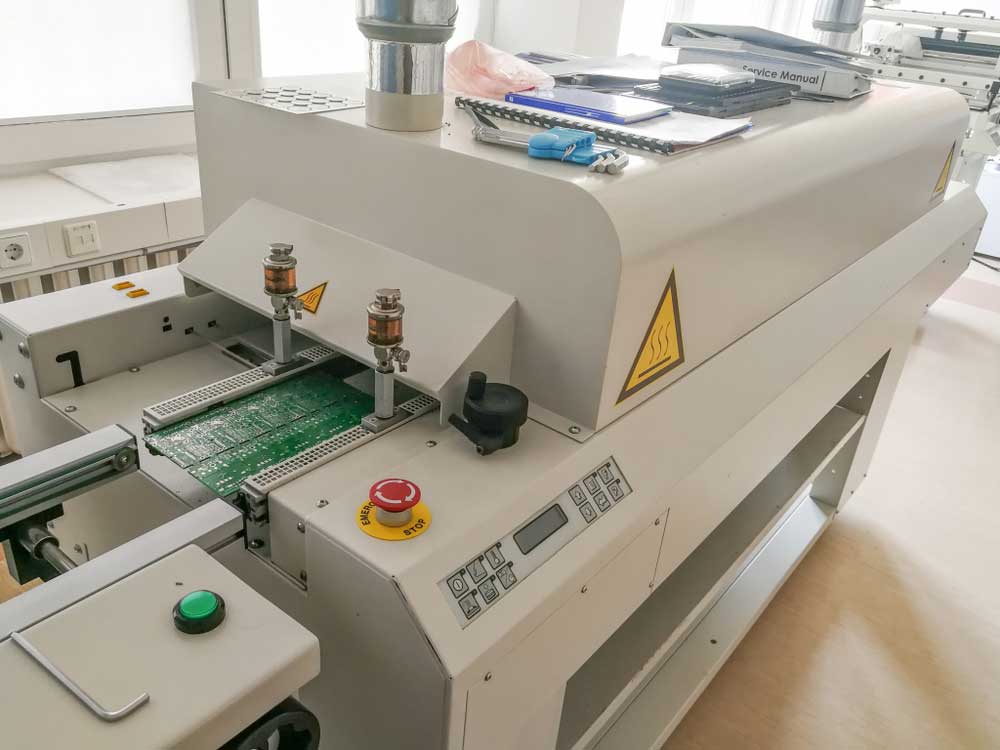
Preparation
1.Apply Solder Resist Layer:
Before wave soldering, apply a solder resist layer to the circuit board. This layer, resembling varnish, prevents solder from adhering to the surface. Leave only the areas where solder exposure is desired uncovered.
2.Ensure Adequate Spacing:
Verify that there is sufficient spacing between solder pads on the board. Inadequate spacing may result in solder bridges, compromising the integrity of the solder joints.
3.Clean Solderable Areas:
Prior to soldering, ensure that the solderable areas are clean and free from oxidation. This can be achieved by using foam or spray flux to remove any contaminants and promote proper solder adhesion.
4.Preheat the Board:
Before introducing the board to the wave soldering machine, preheat it to mitigate thermal shocks. Extreme temperature differentials can lead to damage or defects in the components or circuitry.
5.Wave Soldering Process:
Once the board is adequately prepared, pass it through the wave soldering machine. This machine subjects the board to high temperatures, causing the solder to flow and create solder joints on the exposed areas.
By following these steps meticulously, you can ensure a successful wave soldering process, resulting in high-quality solder joints and reliable circuit board assembly.
Reflow Soldering Machine
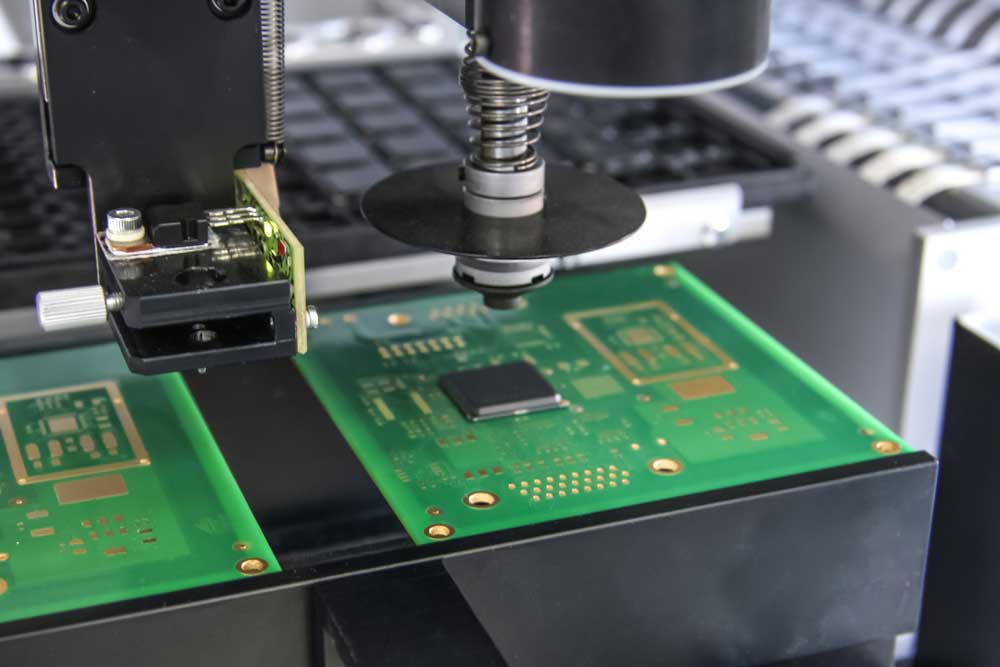
Smaller versions of reflow soldering machines cater to minor rework and prototype areas but lack the soldering capacity of larger models.
Reflow soldering operates on the principle of applying solder paste to desired areas on the board, placing components, and then subjecting the assembly to controlled heating within a tunnel.
The controlled heat within the tunnel ensures the solder melts and secures the components without causing damage to the board.
Reflow soldering machines stand out as one of the most dependable methods for connecting SMD components.
Once the paste is applied, utilize a pick and place machine for precise component positioning on the board. The surface tension of the paste ensures firm adhesion. Subsequently, the board is passed through the reflow soldering machine.
Gradually elevate the board's temperature to the designated level. Rapid heating may lead to uneven distribution, while excessively slow heating may fail to reach the required temperature. The recommended temperature increase rate is 2 to 3 degrees per second.
Upon reaching the target temperature, the process enters the thermal soak stage to ensure uniform temperature distribution. The reflow process commences when the board achieves the maximum temperature, facilitating solder melting and joint formation.
Finally, the board undergoes cooling within a temperature range of 30 to 100 degrees Celsius.
Final Words
8 Effective Ways to Shield Your CCTV Camera from Rain
1.Choose Weatherproof CCTV Cameras
2.Keep Your Camera out of the Rain
Depending on the camera's positioning and the anticipated weather conditions, periodic relocation may be required. For instance, if your camera is oriented northward, placing it beneath an umbrella might lead to water accumulation on the lens, necessitating occasional adjustments to ensure optimal coverage.
3.Install Camera Housings
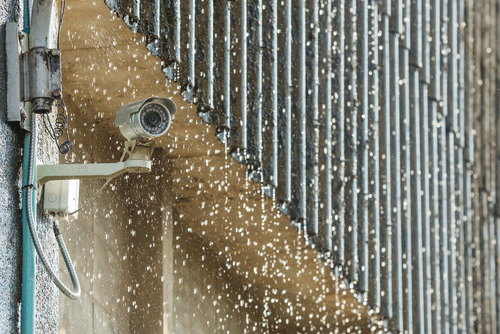
4.Put It in a Well-Ventilated Space
To safeguard your outdoor CCTV camera from rain, take preventive measures to avoid exposure to moisture. Thoroughly inspect the installation area for any openings where rainwater could infiltrate, including downstairs windows or other vulnerable spots. Utilize plastic barriers or waterproof coverings as an additional safeguard against rain penetration through these areas.
Furthermore, consider the camera's positioning to minimize water contact with the lens. Installing the camera at an angle tailored to your specific requirements and location can effectively deflect water and prevent droplet accumulation, preserving image clarity.
Opting for a wireless outdoor CCTV installation service is another option to eliminate outdoor cable runs. However, bear in mind that this may entail drilling holes through building exteriors and roofs to mount antennas and sensor wires at suitable heights. Evaluate these factors carefully before determining the placement and height of your wires.
5.Position Cameras Under Overhangs
6.Use Rain Guards or Shields
7.Use a Heat Bulb for Moisture Protection
One approach is to utilize an infrared heat bulb, which can shield your camera in damp conditions. When the outdoor temperature exceeds 50 degrees Fahrenheit, the heat emitted by the bulb acts as a barrier against moisture. However, this solution may not be suitable for colder climates or freezing temperatures.
Alternatively, installing a heating system equipped with a steel mesh cover offers another level of protection for your outdoor CCTV camera during rainy weather. The mesh cover facilitates heat dissipation while ensuring the camera remains shielded from moisture.
For added protection, consider using heating mats, ensuring they are adequately insulated to prevent overheating and potential surface damage.
Another effective strategy is to incorporate floodlights with enclosures or domes around them. These fixtures not only keep water away from the light source but also provide excellent illumination for nighttime surveillance.
To safeguard both lights and cameras, installing waterproof housings can prevent moisture ingress and protect internal components from corrosion or damage.
Creating an enclosure specifically for your outdoor CCTV camera offers an additional layer of defense against rain and harsh weather conditions. This enclosure provides protection while maintaining visibility, particularly during low-light periods such as dusk or dawn.
8.Adjust Your Camera Sensitivity To Detect More Rain Drops

Fortunately, resolving this issue is straightforward. By accessing your camera's "brightness" setting and increasing it by just 5%, you enhance its ability to detect raindrops effectively.
Alternatively, enabling automatic motion detection on your camera proves beneficial for outdoor surveillance. This feature detects any nearby movements, offering comprehensive coverage for your business premises.
Ensure that your motion detection settings align with the size of objects you intend to monitor. Tailoring the sensitivity accordingly ensures accurate detection, distinguishing between individuals and larger entities like animals or vehicles passing by.
While preventing rain ingress entirely can be tricky, there are measures you can take to mitigate moisture exposure to your CCTV system.
Elevating the camera placement reduces the risk of rain penetration. Additionally, sealing the camera window with silicone or window sealant serves as a barrier against water intrusion.
If utilizing a heat bulb, installing a thermostat is advisable to regulate its temperature and prevent overheating, which could potentially damage the camera.
Ultimately, the most effective approach to safeguarding your camera from rain is to prevent exposure altogether. This can be achieved by enclosing the camera in a waterproof housing or positioning it in a well-ventilated area.
Conclusion
Understanding the intricacies of surgical procedures and the methods surgeons employ to control blood loss amid incisions and sutures can be challenging for the layperson. Vascular clamps play a pivotal role in closing blood vessels, halting blood flow, and thus preventing excessive blood loss during surgery.
Within the realm of surgery, an assortment of medical clamps finds application, each tailored to specific needs and tasks. In the forthcoming article, we delve into a comprehensive exploration of surgical clamps, encompassing their types, functions, and applications.
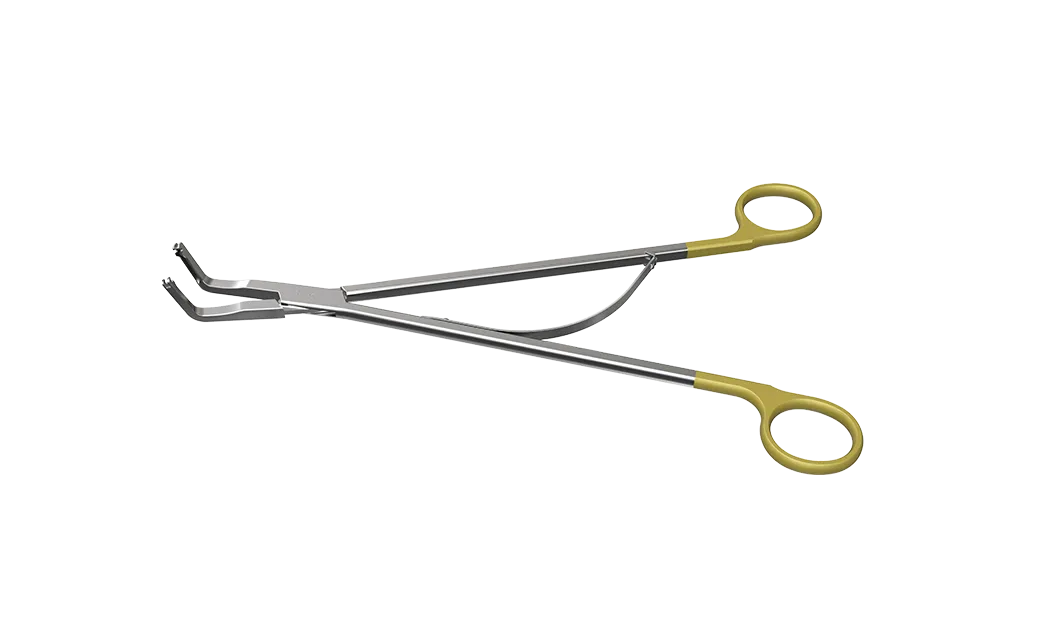
What Is a Surgical Clamp?
History of Surgical Clamps
In 1903, at the Department of Surgery of the Berlin University Hospital, Edmund Höpfner introduced this clamp. As part of his doctoral thesis, he conducted end-to-end anastomoses of divided arteries in canines. The Höpfner clamp remained widely utilized in Germany until the 1960s.
Over time, clamps have undergone significant evolution, resulting in the availability of various types of vascular clamps catering to diverse applications. The ensuing sections will provide insights into the common types of vascular clamps employed in surgery.
Types Of Surgical Clamps
- Hemostatic Clamps: These clamps are designed to control bleeding by compressing blood vessels. They come in various sizes and shapes, including straight, curved, and angled jaws, to accommodate different anatomical structures and surgical needs.
- Mosquito Hemostatic Forceps: These small, delicate clamps feature fine, serrated jaws that provide precise hemostasis in delicate surgical procedures, such as microsurgery and ophthalmic surgery.
- Kelly Hemostatic Forceps: Kelly clamps have longer jaws compared to mosquito clamps, making them suitable for grasping and occluding larger blood vessels. They are commonly used in general surgery and orthopedic procedures.
- Crile Hemostatic Forceps: Crile clamps are similar to Kelly clamps but have a serrated pattern along the entire length of the jaws, providing a firmer grip on tissues and vessels. They are often used in abdominal surgery and vascular procedures.
- Bulldog Clamps: These specialized clamps have a ratcheted design and are used for temporary occlusion of larger blood vessels during vascular surgery. Bulldog clamps come in various sizes and shapes, including straight, curved, and angled jaws, to accommodate different vessel sizes and anatomical locations.
- Allis Tissue Forceps: Allis clamps feature sharp, interlocking teeth that securely grasp tissue without causing excessive trauma. They are commonly used for holding and retracting tissues during surgery, such as in gastrointestinal and plastic surgery procedures.
- Babcock Tissue Forceps: Babcock clamps have a atraumatic, fenestrated design with a ring handle, making them ideal for grasping delicate tissues, such as intestines and fallopian tubes, without causing damage.
- DeBakey Atraumatic Forceps: DeBakey clamps have a delicate, atraumatic design with fine, serrated jaws that provide a firm grip on tissues without causing trauma. They are commonly used in cardiovascular and microsurgery procedures.
Applications of Surgical Clamps
- Hemostasis: Surgical clamps are frequently used to achieve hemostasis, which involves controlling bleeding during surgery. By compressing blood vessels, clamps help to stop or reduce blood flow, allowing surgeons to work in a clear surgical field without excessive bleeding.
- Tissue Manipulation: Clamps are used to grasp and manipulate tissues during surgery. They provide surgeons with a secure grip on tissues, allowing for precise positioning, retraction, and manipulation as needed to access surgical sites and perform procedures accurately.
- Organ Retraction: In many surgical procedures, organs and tissues need to be temporarily moved or retracted to access the surgical site. Surgical clamps are used to hold and retract organs, such as the liver, intestines, or uterus, to provide better visibility and access for the surgeon.
- Vessel Occlusion: During vascular surgery, clamps are used to occlude or block blood vessels temporarily. This allows surgeons to perform procedures such as vascular anastomosis or bypass grafting while minimizing blood loss and maintaining blood flow to vital organs.
- Grasping Sutures: Surgical clamps are often used to grasp and manipulate sutures during wound closure. They help surgeons to securely hold sutures in place while tying knots or performing suturing techniques to close incisions and wounds.
- Tissue Dissection: Clamps can be used to dissect and separate tissues during surgical procedures. They provide a precise and controlled means of dividing tissues and structures, allowing surgeons to access deeper layers and perform procedures such as tissue excision or organ removal.
- Holding Surgical Drapes: Clamps are used to secure surgical drapes and covers in place, creating a sterile barrier around the surgical site and preventing contamination during surgery.
To Sum Up
The surgical instruments provided by Kangji Medical Instrument Ltd are of the highest quality. Our experience also makes us more reliable in this industry. We have been manufacturing and supplying surgical instruments for over two decades. You can request customized instruments from us if your preferences differ.
The intense heat presents unique challenges for LED lighting systems, potentially leading to subpar performance and premature failure if components are not designed to withstand high temperatures. Among these components, LED drivers warrant particular concern, as they generate the most heat within an LED lighting system and are at the greatest risk of overheating and failure.
Understanding the Challenges of High Heat Environments
Introduction to High Temperature LED Lights
In contrast, high-temperature LED lights are purpose-built to endure extreme heat conditions, rendering them suitable for use in environments with elevated temperatures. Equipped with sophisticated thermal management systems, these lights ensure consistent performance even in challenging thermal environments. Engineered to withstand temperatures reaching up to 100°C (212°F), high-temperature LED lights excel in applications where traditional LED lighting solutions falter.
Factors to Consider When Choosing LED High Temperature Resistant Lights
- Temperature: LED fixtures should be rated to withstand temperatures of at least 80°C/176°F to accommodate elevated ambient temperatures, especially in environments where heat rises.
- Optional Remote LED Driver: Opt for fixtures with the option to use a remote LED driver, allowing the driver to be mounted in a cooler location to enhance heat resistance, with the capability to withstand temperatures of up to 100°C/212°F.
- EXTREME-LIFE Rating: Look for fixtures with an L70 rating, indicating that they can maintain 70% of their original light output for over 100,000 hours, even at high temperatures.
- Light Output: Ensure that the LED lights provide sufficient illumination for the intended tasks and safety requirements, with options available in different wattages to meet varying lighting needs.
- Optics: Select fixtures with appropriate optics to control light distribution based on mounting height, avoiding over-illumination or uneven light coverage.
- Efficiency: Prioritize fixtures with high lumens per watt (LPW) efficiency to minimize energy consumption and overall operating costs.
- Vibration Resistance: Choose fixtures tested and rated to withstand vibration commonly found in industrial settings, with ratings typically at 3G or 5G.
- Impact Resistance: Opt for fixtures with an IK10 rating for impact resistance to minimize damage from accidental impacts.
- Finish: Look for fixtures with heat-resistant powder coat finishes that provide long-term durability in harsh environments.
- Surge Protection: Ensure that fixtures come with surge protection to safeguard against electrical surges commonly encountered in industrial locations.
- Field Repairability: Select fixtures with a modular design that allows for easy field repair using common tools, reducing downtime and repair costs.
- Mounting Options: Choose fixtures with versatile mounting options to accommodate different installation requirements.
- IP Rating: Prioritize fixtures with a minimum IP66 rating to protect against dust, dirt, debris, and water jets, ensuring durability in challenging environments.
Ambient Temperature vs. Case Temperature
Manufacturers often test components in controlled environments with a default ambient temperature of 73˚ Fahrenheit (23˚ Celsius). However, deploying a component tested under these conditions in a hot environment like Las Vegas can significantly impact its service life. Therefore, LED drivers intended for high-temperature use should be rated and tested to withstand at least 45˚ Celsius.
Case temperature, on the other hand, refers to the temperature of the hottest part of the component during normal operation at a given ambient temperature. It's essential to ensure that the case temperature remains within safe limits to prevent ignition of nearby combustible materials and avoid damage to internal electronics. For high-temperature applications, LED drivers should have a rated case temperature of no more than 75˚ Celsius when tested at an ambient temperature of 45˚ Celsius.
Both ambient and case temperature ratings are critical factors in selecting components for high-temperature environments. Careful examination of these ratings provides insight into how the LED driver will perform in real-world conditions, where temperature fluctuations are more significant and extreme than those in controlled laboratory settings.
LED Driver Manufacturer
Click to shop for LED drivers designed for high-heat applications.
About Suncom Power
Understanding Your Induction Hob
Materials Needed for Cleaning

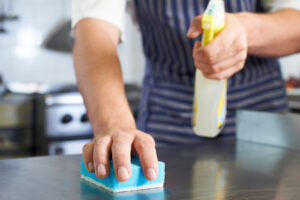
To whip up this cleaner, simply mix equal parts water and white distilled vinegar in a spray bottle. If you're dealing with stubborn grease, you can add a few drops of lemon essential oil for an extra degreasing boost. Give the bottle a good shake to ensure everything is well combined.
While you could use the spray alone, I prefer to kick it up a notch with baking soda for a deeper clean. Sprinkle baking soda generously over the cooktop, making sure to cover any spills or grease spots. Then, spray the vinegar and water mixture over the baking soda. You'll notice a satisfying fizzing reaction as the two ingredients work their magic. Once the fizzing subsides, grab a paper towel and wipe away the cleaner. The baking soda and vinegar combo effectively eliminates all traces of grease and spills, leaving your cooktop gleaming.
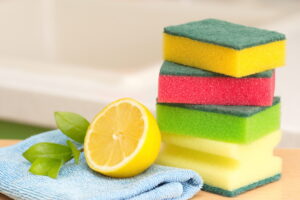
Mix together a cup of warm water, 1/4 cup of liquid dish soap, and 1 tablespoon of lemon juice in a bowl. Soak a soft cloth in the mixture until it's damp. Then, place the cloth over the burned or stained area and let it sit for about 30 minutes. Afterward, use the cloth to wipe down the cooktop, and voila! Your cooktop will be stain-free.
While the cloth works its magic for half an hour, I like to multitask by cleaning around the house or taking a quick break on the couch.
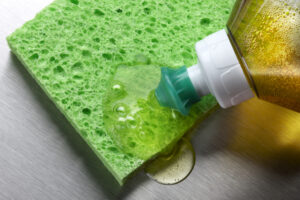
Start by pouring a small amount of dish soap onto the induction cooktop, ensuring it lightly covers the entire surface. Sprinkle baking soda over the soap, then add about one tablespoon of hydrogen peroxide to the middle of the cooktop. Gently use the dish scrubber to scrub away any grime, working until the surface is clean to your satisfaction. Finally, use a paper towel or soft cloth to wipe down the surface and reveal your sparkling clean cooktop!
If you find yourself without a dish scrubber, fear not! An extra toothbrush can come to the rescue. I personally designate a toothbrush solely for cleaning purposes, ensuring it's kept with my cleaning supplies to avoid any mix-ups with my dental hygiene routine. Using a toothbrush allows me to reach into all the nooks and crannies effectively. Just remember to keep this toothbrush separate from your oral care tools!

- Cut the potato into slices, ensuring they're large enough for a firm grip.
- Rub the potato slice in small circles over the stains. If the potato dries out, switch to a fresh slice.
- Next, pour vinegar directly onto the cooktop and let it sit for 5 minutes.
- Use a paper towel to wipe across the cooktop, removing the vinegar.
- Now, open up your soda and pour it over the area you're targeting.
- Let the soda sit for about 15 minutes.
- Finally, wipe away the soda, and behold as the stains magically disappear before your eyes!
Clean Your Induction Hob with These 3 Tips
Clean your induction hob right after use for optimal results. Once it has cooled down, wipe away any food remnants and stains with a damp cloth. This prevents residues and grease from solidifying, making them easier to remove. Finish off by polishing with a clean microfiber cloth.
2.Use a Special Scraper
When removing dirt, employ a dedicated scraper. Apply gentle pressure and maintain the scraper at a 45-60 degree angle to prevent scratches. Afterward, wipe the hob with water and dry it using a clean microfiber cloth.
3.Use Specially Formulated Cleaning Products
Utilize cleaning products specially formulated for induction hobs. These products are designed to effectively remove stains and grease without damaging the surface.




